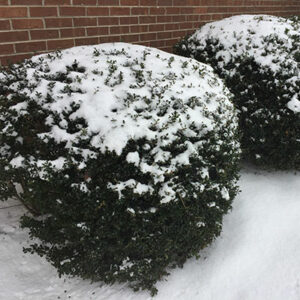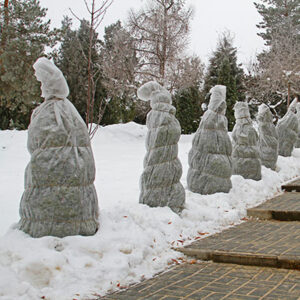Winter Burn: How To Identify, Prevent, and Treat It
Winter burn is a common issue that can affect various species of evergreen trees and shrubs in Eastern Pennsylvania. If you have pine or spruce trees in your yard, or plants like rhododendrons, holly bushes, or junipers in your garden, you should be aware of this problem, how you can identify it in your plants, how it can be prevented, and how winter burn can be treated. If not controlled and treated, winter burn can lead to serious injury or even death of the plant. To make sure this issue doesn’t cause long-term damage to your plants, call the professionals at Showcase LawnWorks.
What Causes Winter Burn

As the name suggests, winter burn is caused by the cold temperatures during the winter season. These cold temperatures, particularly when the ground freezes, can prohibit a plant from taking up much-needed water and nutrients from the ground to replace the water it has lost through transpiration and sustain itself in the dry, cold conditions that winter brings to Pennsylvania. This creates a big problem for a plant with a shallow root system or one that is not healthy and well-developed. Warmer temperatures in the fall can also cause a plant to delay its transition into winter dormancy, leading to severe damage to a plant’s foliage when temperatures drop quickly as the seasons change. Another factor that can cause winter burn are plants warming up during a sunny day followed by drastic temperature changes at night as the sun goes down.
Recognizing Winter Burn In Your Eastern PA Trees and Shrubs
When plants can’t take in water from the ground to replace the water they have lost through transpiration, this causes them to become dehydrated. This winter burn dehydration is easily identified by the browning of foliage near the tips of branches that eventually spread down the branch toward the center of the plant. For broad-leaf evergreen plants like boxwood trees, holly bushes, and rhododendrons, browning will occur on the edges of leaves first and then spread to cover the entire leaf. This browning will typically show up on the southern and western sides of plants, and browned foliage will start to fall off the plant in the spring and summer.
How You Can Prevent Winter Burn
If you want to keep your plants from getting winter burn this year and in future seasons, there are a few important steps you should take:
- Know before you plant: Make sure any plants you add to your yard will be cold-hardy enough for the winter season or will be in a location that will offer protection from cold temperatures and icy blasts. Also, only plant evergreen species in the spring, summer, and early fall so that any new plants will have time to develop a healthy root system before the cold sets in.
- Protect plants from the elements: Consider creating barriers from materials like canvas or burlap about two feet away from evergreen species to help provide shade and block cold winds.

- Add plenty of mulch: Mulch around the base of evergreen trees and shrubs will help to insulate a plant’s root system and allow the plant to continue taking up water and vital nutrients from the soil despite extremely cold temperatures. However, don’t put mulch too close to the trunks of plants, as this can lead to problems with rot and disease.
- Prune and fertilize at the right time: You shouldn’t prune evergreen trees or shrubs after late summer, as this can prompt the plant to produce new growth that won’t be winter-hardy, making the plant very susceptible to damage from winter burn. Likewise, avoid fertilizing evergreen plants after late summer to help prompt them to enter the winter dormancy stage.
- Make sure plants have plenty of water: To help with dehydration problems in the winter, it’s important to ensure you are watering your evergreens properly during the growing season.
The Best Way to Treat Winter Burn
The best way to treat a plant suffering from winter burn is with a winter burn treatment like the one offered by Showcase LawnWorks, which can help minimize the extent of the damage caused by this seasonal problem. Branches and sections of plants affected by winter burn should be removed in mid-spring after the plant has produced new growth. Evergreens that were severely damaged by winter burn will probably need a little extra fertilizer and water during the growing season to get them back in health, so a dependable tree and shrub care program is also a great idea.
If You Have Evergreen Trees Or Shrubs In Your Yard, Call Showcase LawnWorks
Winter burn can cause serious damage or even death to evergreen trees and shrubs in Pennsylvania, so it’s important to make sure they are well-prepared for the winter ahead and that any damage that does occur is limited. The experts at Showcase LawnWorks offer a winter burn treatment that can help save your plants, as well as a comprehensive tree and shrub care program that will keep them healthy and ready to face whatever nature throws at them.
Visit our website to see more information on our tree and shrub care program and all of our other lawn care, perimeter pest control, and landscaping services. Fill out our contact form or give us a call at 717-354-3226. And don’t forget to keep reading our monthly blog for more helpful articles on caring for your plants and yard!
Are you on Facebook? We are too. Check out our Facebook page and like us.